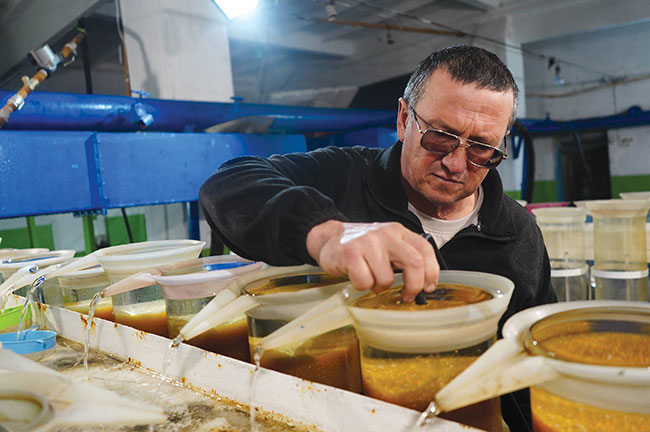
News & Views
Alternative suppliers save the day for Russian salmon industry
May 1, 2023 By Hatchery International staff
 Russia experiences a shortage of aquafeed.
Photo: Baikal Ryba
Russia experiences a shortage of aquafeed.
Photo: Baikal Ryba Several key broodstock and aquafeed suppliers curtailed trade with Russia last year, but salmon (Salmo salar) farmers managed to source inputs in other countries, the Russian Union of fish companies, Rosrybhoz, said.
Russian aquafeed import was in turmoil last year after supplies from Denmark and Finland came to a halt. In this background, deliveries jumped from alternative directions, including Norway (45 per cent of imports), Belarus (16.2 per cent), France (9.1 per cent), Turkey (7.7 per cent), Germany (6.9 per cent) and Armenia (6.1 per cent), Rosrybhoz estimated.
Russian feed mills also struggle to fill the gap in the market but failed to ramp up production volumes in time, the organization admitted.
Anticipating even more considerable turbulence, Russian fish farmers rushed to stock up on aquafeed for at least several months ahead. As a result, its import stood at 126,000 tonnes last year, 30 per cent higher than in 2021, the Russian veterinary watchdog, Rosselhoznadzor, reported.
The story is similar in the broodstock segment. The U.S. and France, in the previous years the largest suppliers of salmon smolt to Russia, were replaced by Spain (27.3 per cent), Denmark (26.3 per cent), South Africa (14.3 per cent, and Norway (11 per cent). Russian hatcheries also took steps to expand operations to replace import, Rosrybhoz said, citing Sochi-based hatchery Adler, which saw a 38.4 per cent increase in trout fry production.
Russia is still having strong dependence on imported Atlantic salmon fry, the organization admitted.
Rosrybhoz has also praised the generous state aid the Russian government subjected fish farming to last year. In addition to lowering import duty on aquafeed, the authorities spent 2.1 billion roubles (US$28 million) on subsidizing the interest rate on bank loans for the purchase of aquafeed, veterinary drugs and broodstock. Compared with the previous year, this figure jumped by a factor of five times, Rosrybhoz estimated, adding that in addition to federal programs, fish farmers also enjoy state support programs at the regional level.
Print this page
Advertisement
- Hatchery 101: Changing with the climate
- Use of commercial probiotics pays off in Bangladesh cultured giant freshwater prawn





